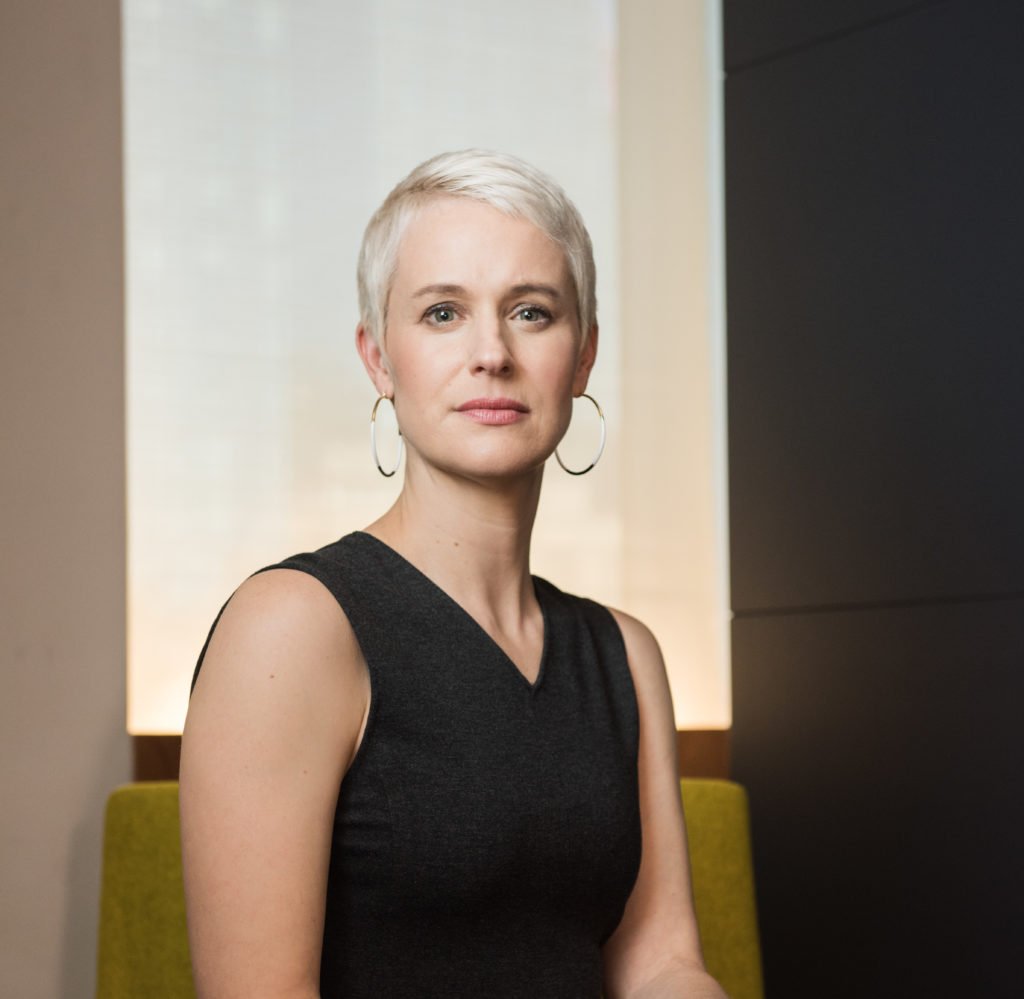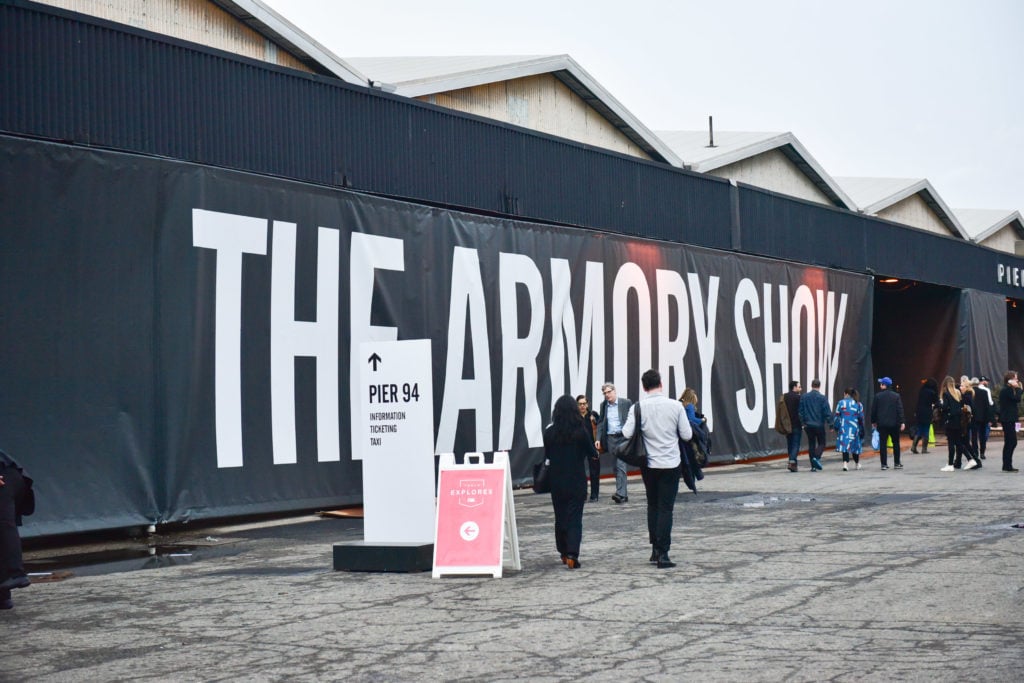Art World
5 High-Stakes Challenges Facing the Armory Show, and How New Director Nicole Berry Is Tackling Them Head-On
The art-fair veteran discusses how to navigate the iconic event through the stormy waters of 2018—and beyond.

The art-fair veteran discusses how to navigate the iconic event through the stormy waters of 2018—and beyond.

Tim Schneider

Even as art fairs continue to solidify their status as a central pillar of the 21st-century art market, they also must contend with a growing list of internal and external threats. Each individual event contains more moving parts than a Swiss watch, demanding that organizers remain proactive, vigilant, and creative to keep the operation running smoothly for all involved, from visitors to exhibitors to corporate partners. At the same time, the worldwide explosion of fairs over the past 15 years has generated unprecedented competition within the sector, pressuring every organizer to find ways to slice through the crowd and stay relevant in an arena now overwhelmed by choice.
Few know the ins and outs of this battle royale better than Nicole Berry, executive director of the Armory Show. With the unveiling of the fair’s 2018 edition now upon us—the doors at Piers 92 & 94 open to VIPs and press today before welcoming all comers Thursday, March 8, through Sunday, March 11—the art world gets to experience her own recipe for how to shape a great market event, and make it rise above the scrum. On the eve of the fair’s debut, artnet News caught up with Berry to discuss how she is using her unique strengths to overcome the potentially daunting obstacles facing this year’s edition of the Armory, its future iterations, and the art-fair sector overall.
There’s an old saying that if you stay ready, you never have to get ready when a big moment arrives. Berry is living proof that the advice holds up. After accumulating a wealth of experience in a range of different art-world roles, including a year as the Armory Show’s deputy director and five years before that in the same position at EXPO Chicago, Berry suddenly earned her shot at leading New York’s signature fair last November, when sexual harassment allegations precipitated the exit of then-director Benjamin Genocchio. The fair’s parent company moved swiftly to elevate Berry to executive director, but the abrupt change still left her with a mere four months to transition into her new role and implement her vision of the event before the debut of this week’s Armory Show.
Looking back on that period now, though, Berry projects utter confidence. “As you know,” she explained, “I have significantly more fair experience than my predecessor, so the transition and event execution has been quite seamless.” In particular, she credited her broad responsibilities at EXPO Chicago for preparing her for this opportunity. “In Chicago I had the opportunity to touch every aspect of the fair and really help build it from the ground up. The Armory Show is a bigger stage and certainly presents a different set of challenges and opportunities, but I am lucky enough to have an incredible and dedicated team working with me, so it’s been a real pleasure to see it all come together after months of hard work.”
Berry also emphasized that her ascension to executive director simply allowed her to complete several important projects already set in motion long before, having dreamed up many of the initiatives premiering at this year’s fair when she join the Armory Show as deputy director in October 2016. Chief among them: the inaugural Curatorial Leadership Summit, a full-day program for curators covering some of the most pressing issues in their field today, chaired by Naomi Beckwith of the Museum of Contemporary Art Chicago. “The Curatorial Leadership Summit was one of my first initiatives when I joined the fair,” she stated, “so seeing it come to fruition is rewarding.” EXPO Chicago inaugurated a similar “Curatorial Forum” in 2015 under Berry’s guidance.
Humanity may one day build a perfect setting for an art fair, but that day has not arrived yet. This year the Armory Show returns to Piers 92 & 94, where the convenience of Midtown once again locks horns with the unique challenges of a waterfront location split across dual docks. But when Berry entered her new role, she immediately sought to maximize what she saw as the venue’s untapped potential.
“One of the first things I did as executive director was to take a look at every aspect of the floor plan and carve out more room for large-scale projects while ensuring there would be enough surrounding space to take them in,” Berry said. “This concept of creating a moment to be absorbed by an artwork gets to the heart of what I want to create at the Armory Show.”
The crown jewel of this thought process may be the fair’s “Platform” section. Curated by Jen Mergel, the 15 large-scale and site-specific works comprising its second iteration include what Berry describes as a “luminous” installation by Tara Donovan in Pier 94’s Town Square area, a new triptych created for the fair by Richard Long in Pier 94’s staircase lounge, and a 50-foot work by JR on the fair’s façade, which Berry says will be visible from the West Side Highway. To her, “these projects are extremely important for the fair experience”—not because of what she referred to as their “Instagramability,” but rather because “in this culture of fair fatigue,” they “provide spaces for reflection and contemplation.”
This same ethos contributed to Berry’s decision to decrease the number of exhibiting galleries, slimming down from 210 last year to 198 this year. By thoughtfully trimming the participant list, the 2018 Armory Show could expand in other ways. Berry noted that each exhibitor’s booth is larger than before, and the “Focus” section—curated by the Minneapolis Institute of Art’s Gabriel Ritter this time out—now covers 50 percent more space than in 2017. It also now enjoys pride of place within the venue. Berry shifted the location of “Focus” to the front of Pier 92 as part of a plan to give the entire wing a “fresh look and feel.” She asserts that “the difference will be self-evident.”
Although the temporary stairway connecting Pier 92 to Pier 94 certainly qualifies as one venue-specific quirk, years of infamy within the art world—where it is dubbed the “staircase of death”—have propelled it, fairly or unfairly, to its own special place on the Armory Show’s list of challenges. Recognizing the need for a forward-thinking architectural shakeup, Berry decided to both de-clutter and activate this key transitional space like never before.
For the fair’s 2018 edition, Alex Schweder and Ward Shelley were invited to produce “a new piece of performance-architecture” around the staircase. Despite her obvious excitement about the work, Berry preferred to keep its exact nature under wraps in advance of the fair’s debut. “Without revealing too many details, it will certainly be a much-talked-about installation,” she hinted.
To enable Schweder and Ward’s work, as well as other other large-scale artist projects, Berry and her team removed “nearly all” the booths in close proximity to the staircase on the Pier 94 side. And as a final practical improvement, a “connecting tent” will bridge the piers to make the voyage from one to the next more accommodating than ever.

Armory Show 2017. Photo courtesy of Sean Zanni/PMC.
As high-profile art fairs continue to pop up around the world, their organizers have realized that the quality and diversity of their amenities matter almost as much as the quality and diversity of their artwork. The Frieze Art Fair, for instance, has made having satellites of hot-ticket foodie destinations like Roberta’s a hallmark of their fairs in both London and New York. The Armory Show sought to make strides in this regard last year, partnering with Hospitality House to bring in a selection of quality food and beverage purveyors from around New York. Berry consciously set out to keep the positive culinary momentum building in 2018.
Although the unions remain an integral part of the fair’s build-out and operational aspects, she clarified that, “In the food realm, we are not beholden to unions at all.” This freedom allows the fair to welcome new entrants the Sosta, Nolita’s fast-casual pasta-and-salad favorite, as well as “Upper East Side staple” Butterfield Market for “exceptional snacks, bites, and sweets.” Returning from last year’s edition are vegan sensation By Chloe and Juice Press, which will operate a fleet of mobile carts on both piers. (Berry described the latter as “my go-to during the busy fair week.”) Rounding out the options are two full-service seated restaurants: il Buco, occupying Pier 92’s VIP lounge, and Hotel Americano, taking up temporary residence on Pier 94 for its fifth consecutive year at the Armory Show.
With 12 months of art fairs now winding their way around the globe to form a kind of modern-day, high-culture Silk Road, every group from collectors to exhibitors to artists has begun to voice a bit of exhaustion caused by relentlessly traveling the industry circuit. This means every fair, no matter how well-regarded it may be, has to work like never before to stay front of mind to the participants in a market nearing the saturation point.
Berry understands this as well as anyone. But she also believes that the Armory Show can stand out most by staying the course. “In a crowded fair market, our job is to remain true to our mission, and to deliver a great fair for our exhibitors, collectors, and visitors,” she explained. “We’re celebrating our 25th year next year, and that speaks volumes to the longevity of our brand and the support we have from the art community at large. I believe our future lies in continuing to cultivate a global community of engaged art patrons, by providing a more thoughtful fair experience for collectors, exhibitors, and arts professionals alike.”